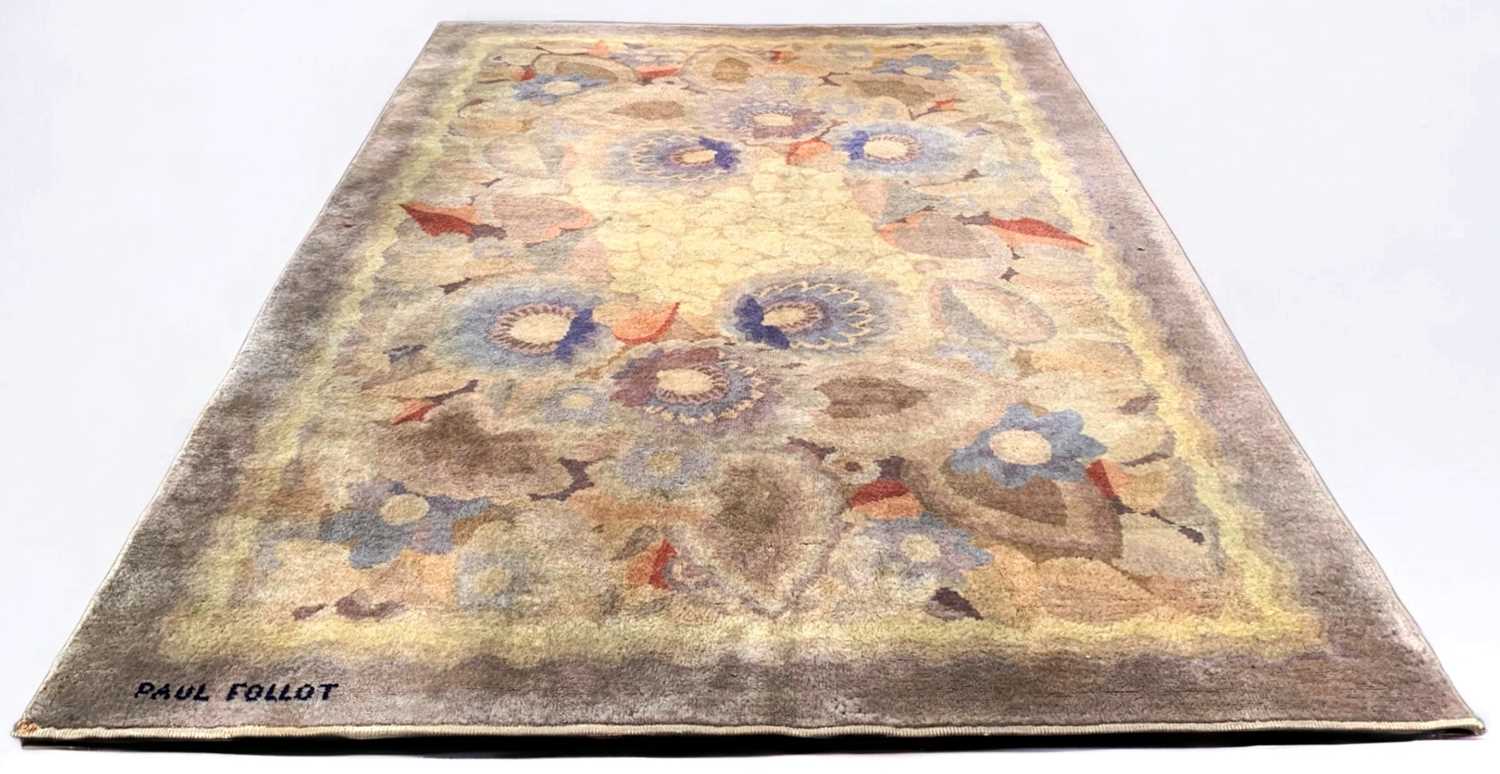A RARE ART DECO ORIENTAL INSPIRED MANTLE CLOCK The rectangular carved jade dial with rose-cut diamond hands, the wide bezel with white enamel chapter ring encircled by a carved red amber chimaera, on a gold and black enamel circular stepped base to the cruciform onyx feet, circa 1925, 12.5 cm., in a original fitted case (enamel slightly damaged) Signed by Cartier, no. 1534 The juxtaposition of the materials and the design of this clock exemplifies the infulence of the Orient in Cartier's work in the 1920s. The double headed chimaera encircling the clock is derived in the form from Indian sea monster bangles, the makara. However the shape of the carved heads are more like the Chinese chimaera, the kilin. This ancient symbol of protective forces was adopted as a personal symbol by the Chinese emperors and was embroidered onto the imperial robes. It therefore came to represent a symbol to be honoured. It is particularly rare to find a chimaera carved from Burmese red amber. Prized in the Orient where it is called Hu-Po and denotes courage, this material was mined near Myitkyina in the valley of the Hukong adjacent to many of the jade mines. These mines have now long ceased production. The carved jade dial depicts a monkey stealing peaches from a tree. Those born in the year of the monkey would believe the animal to be auspicious. the peach in Chinese iconography is the fruit on the tree of life and is regarded as an emblem of longevity. Another rare feature of this clock is the square dial within the circular surround, necessitating the winding mechanism be neatly concealed behind the enamel detailing. Cf.: Hans Nadelhoffer, Cartier Jewelers Extraordinary, H. Abrams Inc., 1984, page 225-7, for illustration of a similar clock and further information on the use of oriental motifs
A RARE ART DECO ORIENTAL INSPIRED MANTLE CLOCK The rectangular carved jade dial with rose-cut diamond hands, the wide bezel with white enamel chapter ring encircled by a carved red amber chimaera, on a gold and black enamel circular stepped base to the cruciform onyx feet, circa 1925, 12.5 cm., in a original fitted case (enamel slightly damaged) Signed by Cartier, no. 1534 The juxtaposition of the materials and the design of this clock exemplifies the infulence of the Orient in Cartier's work in the 1920s. The double headed chimaera encircling the clock is derived in the form from Indian sea monster bangles, the makara. However the shape of the carved heads are more like the Chinese chimaera, the kilin. This ancient symbol of protective forces was adopted as a personal symbol by the Chinese emperors and was embroidered onto the imperial robes. It therefore came to represent a symbol to be honoured. It is particularly rare to find a chimaera carved from Burmese red amber. Prized in the Orient where it is called Hu-Po and denotes courage, this material was mined near Myitkyina in the valley of the Hukong adjacent to many of the jade mines. These mines have now long ceased production. The carved jade dial depicts a monkey stealing peaches from a tree. Those born in the year of the monkey would believe the animal to be auspicious. the peach in Chinese iconography is the fruit on the tree of life and is regarded as an emblem of longevity. Another rare feature of this clock is the square dial within the circular surround, necessitating the winding mechanism be neatly concealed behind the enamel detailing. Cf.: Hans Nadelhoffer, Cartier Jewelers Extraordinary, H. Abrams Inc., 1984, page 225-7, for illustration of a similar clock and further information on the use of oriental motifs










.jpg)




Testen Sie LotSearch und seine Premium-Features 7 Tage - ohne Kosten!
Lassen Sie sich automatisch über neue Objekte in kommenden Auktionen benachrichtigen.
Suchauftrag anlegen